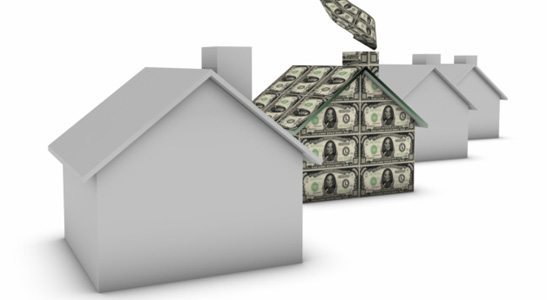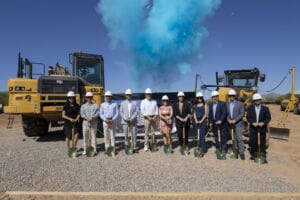The Phoenix-area housing market has finally hit “normal, historical levels” for those going into foreclosure. After years of severe foreclosure trouble, a new report from the W. P. Carey School of Business at Arizona State University reveals that good news and more for Maricopa and Pinal counties, as of May:
* The median single-family home price rose again to $185,000, up about 26 percent from May of last year.
* The final chapter of the foreclosure crisis is wrapping up in Phoenix, as foreclosure starts — homeowners receiving notice their lenders may foreclose in 90 days – finally hit normal, historical levels in May.
* On the negative side, the chronic shortage of area homes available for sale continues to be an issue and could last for years.
Phoenix-area home prices hit a low point in September 2011 and have risen dramatically since then. The median single-family-home price reached $185,000 this May, up from $147,000 last May. That’s a boost of 25.9 percent. Realtors will note the average price per square foot went up 22 percent at the same time. The median townhouse/condo price went up about 27.1 percent.
“Between this January and May alone, the average price per square foot rose about 13 percent for area single-family homes,” says the report’s author, Mike Orr, director of the Center for Real Estate Theory and Practice at the W. P. Carey School of Business. “However, the upward pricing pressure should disappear during the summer. I expect the prices to resume their strong upward direction in the fall, once temperatures drop below 100 degrees and snowbirds return.”
Rising prices don’t appear to be dampening the housing recovery in the Phoenix area at this point. In fact, home-and-condo sales activity went up 6.6 percent between April and May. May is the second month in a row where activity increased from the same time during the prior year, reversing a long negative trend. Even the luxury market is gaining, with more sales in May than in any other single month over the past six years.
“There has been much talk of rising interest rates and the negative effect this might have on demand,” says Orr. “The sudden and recent increase in rates has certainly reduced the motivation to refinance existing home loans. However, it is almost certainly increasing buyers’ determination to purchase homes now, rather than later, when rates may go even higher.”
Orr adds he sees early signs some lenders may react to higher interest rates by easing up their rules, allowing more people to buy homes. He also believes prospective buyers may simply settle for purchasing smaller, more affordable houses than they originally wanted, in order to manage the higher interest payments.
At the same time, the wave of foreclosures triggered by the housing crisis appears to be ending in the Phoenix area. Completed foreclosures on single-family homes and townhome/condos in May were down 53 percent from last May. Foreclosure starts – owners receiving notice their lenders may foreclose in 90 days – went down an incredible 67 percent in the same period. Given population growth, this means the area finally hit its normal, historical level of foreclosure starts this May.
“Foreclosure starts dropped 15 percent just between April and May alone,” says Orr. “Foreclosure levels are now far below the peak levels of March 2009, and the number of pending foreclosures is below the level from the first quarter of 2002. We expect these numbers to continue to fall over the next several years due to the very tight underwriting standards in place.”
Without cheap foreclosures coming into the market — and with ordinary homeowners reluctant to sell because they’re either locked in by negative equity or waiting for prices to keep rising — the Phoenix-area housing market continues to struggle with a chronic shortage of homes available for sale that may last for years. The number of active single-family listings without an existing contract was just over 11,000 as of June 1. That’s down 0.4 percent since May 1, and 83 percent of the available homes are priced above $150,000, creating a problem for those looking in the lower price range. At least the shortage has improved somewhat from last year, when supply was dropping at a rate of 6 percent per month.
“The chronic shortage applies to both homes for purchase and homes for lease,” Orr explains. “The average time for a leased home to be on the market is down to about one month. With this fast turnover and relatively low vacancy rates, it’s perhaps surprising that single-family and condo rents have only very modestly increased.”
New-home builders don’t appear too anxious to help meet the demand. They are trying to make sure they don’t overbuild like they did before the housing crisis, and they want to keep prices moving up. Current new-home sales rates are less than a third of what would normally be needed to keep up with local population growth. As a result, Orr says the combined population of Maricopa and Pinal counties grew 2.9 percent from 2010 to 2012, but the number of owned and leased dwelling units only grew by 1 percent.
Lastly, institutional investors continue to lose interest in the Phoenix area. Their buying spree that began in 2011 is in a downward trend. The percentage of the area’s total single-family-home and condo sales carried out by investors is down from 39.7 in July 2012 to 27.3 percent this May. Most investor transactions are actually going to so-called “mom and pop” purchasers. Orr says they own roughly 96 percent of the area’s rental-home inventory.
Orr’s full report, including statistics, charts and a breakdown by different areas of the Valley, can be viewed at http://wpcarey.asu.edu/finance/real-estate/upload/Full_Report_201306.pdf. A podcast with more analysis from Orr is also available from knowWPCarey, the business school’s online resource and newsletter, at http://knowwpcarey.com/index.cfm?cid=13.




